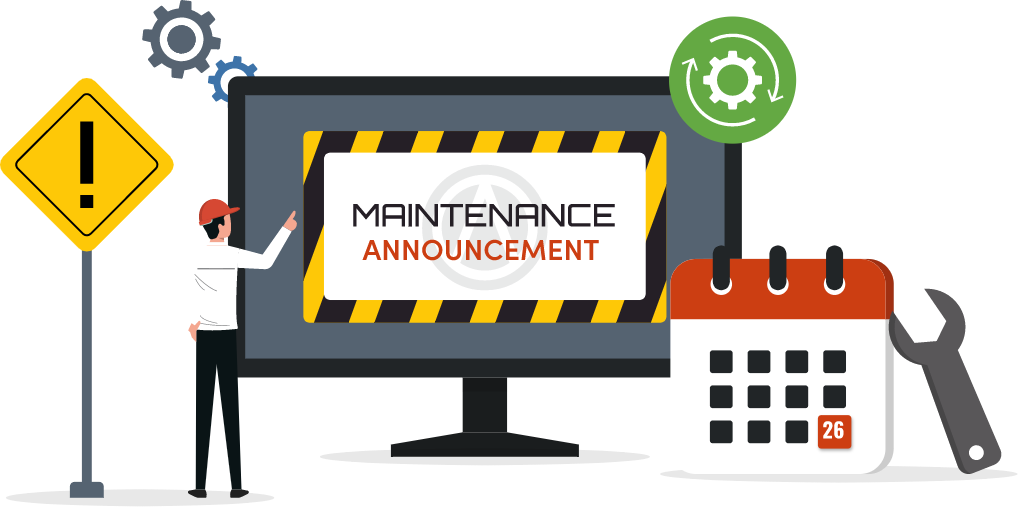What are the basic components of inventory planning for restaurants?
The basics include forecasting demand, setting par stock levels, scheduling orders, proper storage, and continuous tracking. Together, these components ensure smooth stock flow and prevent shortages or excess inventory.
The Ultimate Guide to Inventory Planning for Restaurant Owners
Overview
Running a restaurant is exciting but can also be really challenging. One of the hardest parts is making sure you have the right amount of ingredients on hand - not too much and not too little. This is called inventory planning. If you order too much, food can go bad and get wasted. If you order too little, you might run out of important items and disappoint your customers.
Many restaurant owners struggle with this because customer numbers can change daily, and some ingredients might only be available at certain times. In fact, studies show that restaurants waste about 4.5 million tons of food every year in the U.S. alone. That's a lot of money thrown away!
Good inventory planning helps you avoid this waste. It means knowing how much food you need, when to order it, and how to store it properly. This not only saves money but also keeps your kitchen running smoothly and your customers happy.
The Basics Explained

Inventory planning might sound complicated, but at its core, it's simply about knowing what ingredients and supplies your restaurant needs and when to get them. It's not just about buying stuff and putting it on shelves - it's about making sure you have the right amount of everything to run your kitchen smoothly every day.
Think of inventory planning as a way to balance two main things- avoiding running out of important ingredients and avoiding having too much food that might go bad. For example, if you run out of fresh tomatoes, you might have to stop serving a popular dish, which could upset customers. On the other hand, if you buy too many tomatoes, and they spoil before you use them, you're wasting money.
Inventory planning involves a few key steps
1. Forecasting - This means predicting how much food you will need based on past sales and customer patterns. For example, if your restaurant usually sells 50 burgers on Fridays, you'll want to make sure you have enough buns and patties ready.
2. Ordering - Once you know what you need, you place orders with your suppliers. Timing matters here - you want deliveries to arrive when you need them, not too early or too late.
3. Storage - Properly storing your food helps keep it fresh longer. This means knowing how to organize your fridge and pantry, checking expiration dates, and rotating stock.
4. Tracking - Keeping records of what comes in and what goes out helps you spot problems early, like missing items or too much waste.
By understanding these basics, you can start making smarter decisions about your inventory, which helps your restaurant run better every day.
Efficient Ordering at Your Fingertips
Experience Flawless Inventory Management with Altametrics
The Key Benefits of Effective Inventory Planning
When you plan your inventory well, the benefits go beyond just having enough ingredients in stock. Good inventory planning can save your restaurant money, reduce waste, and even improve the experience your customers have when they visit.
One of the biggest advantages is cutting down on food waste. According to the National Restaurant Association, food waste costs restaurants about 4% to 10% of their food budget each year. That might not sound like much at first, but it adds up quickly and eats into your profits. By ordering the right amounts and keeping track of what's used, you reduce the chance of throwing away spoiled food.
Another benefit is better cash flow. When you buy too much food, your money is tied up in stock that sits unused. That cash could be spent on other important things, like marketing or staff training. On the flip side, running out of ingredients can slow down your kitchen or force you to substitute items, which might disappoint customers and hurt your reputation.
Inventory planning also helps keep your menu consistent. If you have the right ingredients on hand, your chefs can prepare dishes exactly as planned, which means customers get the same great taste every time they visit.
Finally, smart inventory planning makes running your restaurant less stressful. You won't have to worry about last-minute shopping trips or scrambling to replace missing items. Instead, you can focus more on cooking, serving, and growing your business.
How to Assess Your Current Inventory Process
Before improving your inventory planning, it's important to understand how your current process works. Here are the key steps to assess your inventory system -
1. Identify Common Problems
Notice how often you run out of important ingredients or have too much stock that goes bad. For example, if you frequently run out of chicken breasts, your ordering might be off. If vegetables spoil regularly, you might be over-ordering or storing items incorrectly.
2. Check Inventory Counting Practices
Look at how you track inventory. Are counts done regularly and carefully? Some restaurants count daily, others weekly. Consistency and accuracy are essential. If counts are rushed or skipped, your data won't be reliable.
3. Review Inventory Turnover Rate
Inventory turnover shows how fast your stock is used and replaced. A low turnover suggests you're holding too much inventory, risking spoilage. A high turnover might mean you order too little and risk shortages. Strive to find a healthy balance.
4. Evaluate Tracking Tools
Consider what methods you use to track inventory - pen and paper, spreadsheets, or software. Using better tools can help you spot issues early and make smarter decisions.
5. Gather Staff Feedback
Ask your kitchen and receiving teams for their observations. They often notice problems that don't show up in numbers but affect daily operations. Their input is valuable for spotting areas that need improvement.
By following these five steps, you'll get a clear picture of your current inventory process and know exactly where to focus your efforts for better control, less waste, and more savings.
Building Your Inventory Planning System

Creating a solid inventory planning system might seem like a big task, but breaking it down into clear steps makes it easier to manage. Here's how you can build a system that fits your restaurant's needs -
1. Forecast Your Demand
Start by looking at your past sales to predict how much of each ingredient you'll need. Check your busiest days, popular dishes, and seasonal trends. For example, if you notice more customers ordering salads in summer, plan to stock more fresh vegetables during those months. This helps avoid overbuying or running out during peak times.
2. Set Par Levels
Par levels are the minimum amounts of each item you want to have in stock at all times. Setting these levels ensures you don't fall below a certain point and risk running out. Think of it like a safety net. If your par level for cheese is 10 pounds, you'll know to reorder when your stock drops below that.
3. Schedule Your Orders
Create a regular schedule for ordering supplies based on how often you use ingredients and your suppliers' delivery times. Some items, like fresh produce, might need ordering several times a week, while dry goods can be ordered less often. Planning your orders helps keep inventory fresh and reduces waste.
4. Organize Your Storage
Proper storage is key to keeping ingredients fresh. Make sure your refrigerators, freezers, and pantry are organized so staff can find what they need quickly and use older items first. Labeling and rotating stock (using the "first in, first out" method) prevents spoilage.
5. Track and Adjust
Finally, keep records of what you order and use, and regularly check your inventory. Use this data to spot trends and make adjustments. Maybe a new dish becomes popular and needs more ingredients, or you find you're ordering too much of something. Constantly fine-tuning your system helps it work better over time.
By following these steps, you'll build a clear, practical inventory planning system that helps save money, reduce waste, and keep your restaurant running smoothly.
Streamline Your Inventory. Order Smartly.
Start Simplifying Your Orders with Altametrics
Leveraging Technology
Technology can make managing your restaurant's inventory much easier and more accurate. Here are the key ways technology helps -
1. Real-Time Stock Tracking
Technology allows you to see exactly how much of each item you have at any moment. This helps prevent running out or overstocking because you always have up-to-date information.
2. Automatic Alerts
You can set up alerts to notify you when supplies are running low. This way, you can reorder in time and avoid last-minute shortages that disrupt your kitchen.
3. Integration with Sales Data
Technology can link inventory counts to your sales data. When a dish is sold, your stock is automatically updated, so you don't have to count everything manually. This keeps records accurate and saves time.
4. Data and Reporting
Digital tools generate reports that show which ingredients are used most, which items waste the most, and where your biggest costs are. This data helps you make smarter decisions about ordering and menu planning.
5. Saving Time and Reducing Errors
By automating inventory tasks, your team spends less time counting and recording items. This reduces mistakes and frees up staff to focus on cooking and serving customers.
By using technology in these ways, restaurant owners can improve inventory control, reduce waste, and run their kitchens more smoothly with less effort.
Training Your Team
A great inventory planning system is only as good as the people using it. Training your staff and keeping everyone on the same page is essential to make sure your inventory runs smoothly every day.
First, it's important to teach your team how to count inventory accurately. This means showing them how to check stock levels carefully, record the numbers clearly, and handle ingredients properly to avoid damage or spoilage. Simple mistakes like miscounting or forgetting to log items can cause big problems down the line, leading to over-ordering or running out of key supplies.
Second, create easy-to-follow inventory checklists and procedures. When everyone knows the steps and expectations, the process becomes quicker and more reliable. For example, having a daily or weekly routine where staff count specific items at set times helps keep things organized. Clear instructions also reduce confusion, especially if you have new or part-time team members.
Third, encourage good communication between your kitchen staff, purchasing team, and managers. When the kitchen notices an unexpected shortage or a supplier delay, they should report it immediately so the purchasing team can adjust orders. This teamwork helps avoid surprises and keeps the inventory system flexible.
Lastly, lead by example and regularly review how your team is doing. Praise accurate work and provide extra training when needed. Consistency is key to making inventory planning a habit that benefits the whole restaurant.
By investing time in training and clear communication, you build a reliable team that helps keep your inventory on track, reduces waste, and saves your restaurant money.
Monitoring, Adjusting, and Scaling Your Inventory
Inventory planning is not a one-time task - it's an ongoing process that requires regular attention and adjustment. As your restaurant changes, your inventory needs will also change, so keeping a close eye on your system is key to staying efficient and profitable.
Start by regularly reviewing your inventory data and key performance indicators (KPIs), such as inventory turnover, waste levels, and order accuracy. This helps you spot patterns, like certain items consistently running low or excess stock building up. Use this information to tweak your forecasts and par levels, so you're ordering just what you need.
Changes in your menu, customer volume, or supplier availability can also impact your inventory. For example, if you add a new dish that becomes popular, you'll need to adjust your orders to keep up. Similarly, seasonal trends might require you to stock different ingredients at different times of the year.
Scaling your inventory planning is especially important if you grow your business or open new locations. What worked for one restaurant might not fit multiple locations, so adapting your system to each site's needs is essential. This might mean setting up centralized ordering, standardizing procedures, or using more advanced inventory tools.
To make this ongoing process easier and more accurate, consider leveraging technology that streamlines inventory tracking and data analysis. For example, Altametrics offers a powerful inventory management solution designed specifically for restaurants. Their platform helps you automate tracking, get real-time insights, and reduce waste - all while saving you time and money.
Learn more about how you can optimize your restaurant chain's inventory and order fulfillment by clicking "Request a Demo" below.
Transform Your Restaurant Operations Now!
Effortless Inventory Tracking with Altametrics!
Must-Read Content

How to Calculate Inventory Turnover for Your Restaurant

How to Improve Order Fulfillment in Multi-Location Restaurant Chains

Inventory Costing Methods Explained for Restaurants

Tech Tools to Help You Control Inventory in Your Restaurant Effortlessly










